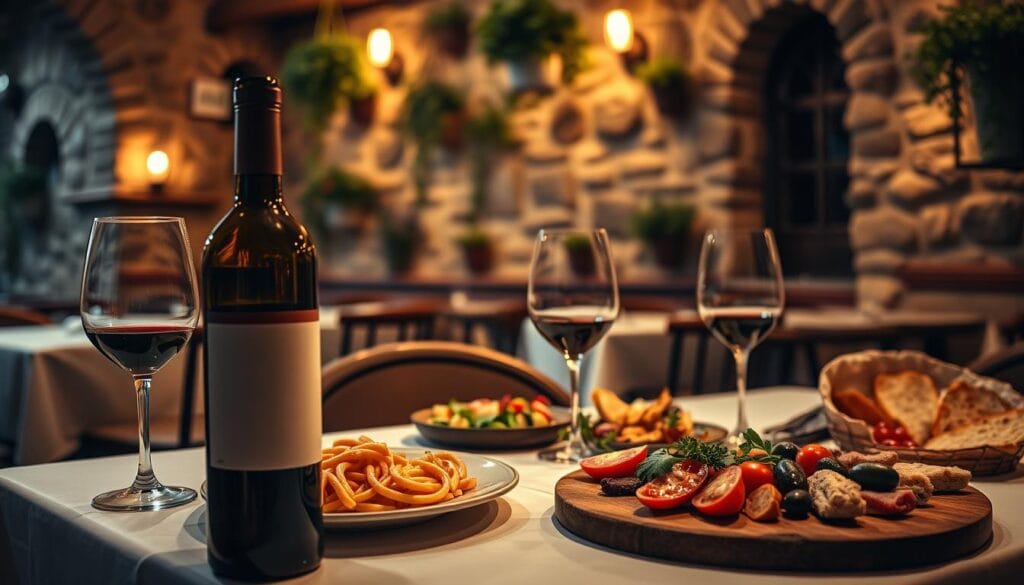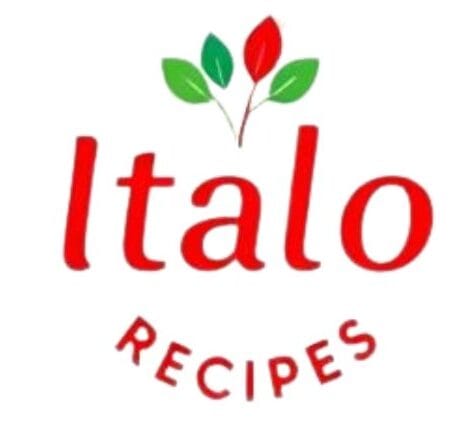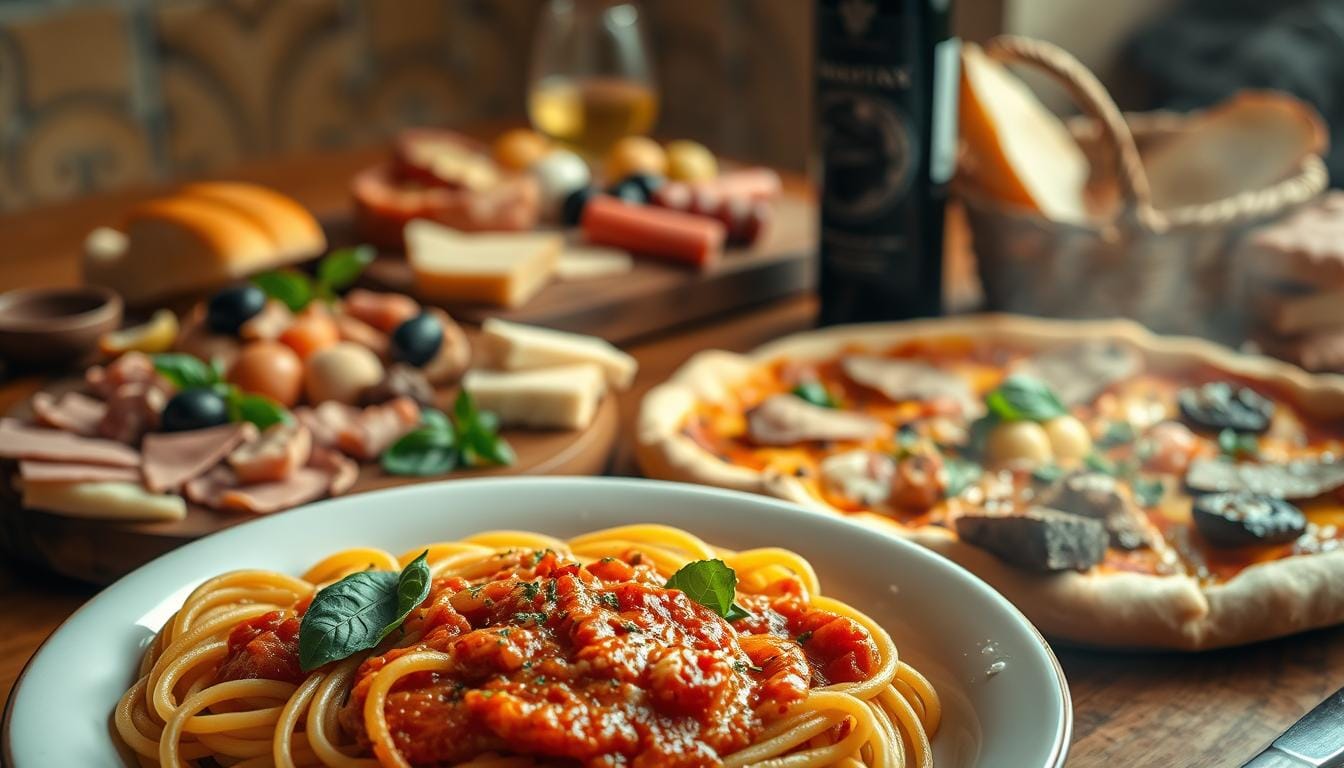Is Italian Cuisine Really the Best? 2025 Here is the Answer.
Have you ever enjoyed the rich tastes of Italian cuisine at a local spot or in Italy? The charm of a perfectly cooked pasta or a delicious pizza has made Italian food famous worldwide.
So, what’s behind the love for Italian cuisine? Is it the simple ingredients, the variety of regional dishes, or something else? As we dive into Italian cuisine, we find out what makes it so popular.
Table of Contents
Key Takeaways
- Italian cuisine is known for its rich flavors and diverse regions.
- The simplicity and freshness of ingredients are key to its appeal.
- Regional specialties add to the complexity and richness of Italian food.
- Italian cuisine is loved globally, enjoyed in many countries.
- The cultural importance of meals in Italy adds to its charm.
The Allure of Mangiare Italiano
Mangiare Italiano is more than just food; it’s a journey through tradition, culture, and family. It’s a world of rich flavors and diverse dishes. These elements have made Italian cuisine a highlight in the culinary world.
A Brief History of Italian Cuisine
Italian cuisine has a long history, shaped by ancient cultures like the Romans, Greeks, and Arabs. The Roman Empire introduced olive oil, garlic, and herbs, influencing Italian cooking. Over time, local ingredients and techniques were added, creating the varied dishes we enjoy today.
Key historical influences on Italian cuisine include:
- The introduction of tomatoes from the New World, which became a staple in many Italian dishes.
- The use of olive oil, a fundamental component of Italian cooking.
- The development of pasta dishes, which varied across regions.
Regional Variations in Italy
Italian cuisine is known for its regional diversity. The country’s varied landscapes, from mountains to coastlines, have shaped unique regional cuisines. Each region has its own ingredients, dishes, and cooking techniques.
| Region | Specialties | Key Ingredients |
|---|---|---|
| Tuscany | Ribollita, Pappardelle | Vegetables, bread, olive oil |
| Campania | Pizza Margherita, Spaghetti alle Vongole | Tomatoes, mozzarella, seafood |
| Veneto | Risotto al Nero di Seppia, Fegato alla Veneziana | Seafood, liver, risotto rice |
The regional variations in Italian cuisine show the country’s culinary richness. Each region brings a unique perspective to Italian cooking. This makes Mangiare Italiano a fascinating culinary journey.
Key Ingredients That Define Italian Dishes
Fresh produce, herbs, and spices are the heart of traditional Italian recipes. They give Italian cuisine its unique flavors and scents. This focus on quality ingredients makes Italian cooking special, loved by people all over the world.
The Importance of Fresh Produce
Fresh produce is key in Italian cooking. Italians love using seasonal veggies, fruits, and other items. This makes their dishes tasty and beautiful to look at.
Ingredients like tomatoes, basil, garlic, and olive oil are staples. They’re mixed in different ways to bring out the best flavors in Italian dishes.
Herbs and Spices in Italian Cooking
Herbs and spices add depth and complexity to Italian recipes. Basil, oregano, rosemary, and thyme are favorites. Black pepper, red pepper flakes, and garlic are also essential.
- Basil: A key ingredient in pesto and a common addition to tomato sauces.
- Oregano: Often used in pizza and pasta sauces for its earthy flavor.
- Rosemary: Pairs well with roasted meats and vegetables.
By mixing fresh produce with herbs and spices, Italian cooks create a variety of flavors. These flavors are both true to tradition and delicious.
Iconic Italian Dishes You Must Try
Italian cuisine is famous for its pasta and pizza. These dishes have won hearts all over the world. At the best Italian restaurant, you’ll find many options that highlight Italy’s rich food culture.
Pasta: Beyond Just Spaghetti
Spaghetti is loved by many, but Italy has much more to offer. From fettuccine Alfredo to lasagna, each region has its own pasta specialties.
- Fettuccine Alfredo: A dish made with fettuccine, Parmesan cheese, and butter.
- Lasagna: Layers of pasta, meat ragù, besciamella sauce, and cheese.
- Tortellini: Cheese-filled pasta served in broth or cream sauce.
| Pasta Type | Region | Typical Sauce |
|---|---|---|
| Fettuccine | Tuscany | Alfredo |
| Lasagna | Emilia-Romagna | Meat Ragù |
| Tortellini | Emilia-Romagna | Cream or Broth |
Authentic Pizza Varieties
Pizza is a big part of Italian food, with each region having its own style. Try Neapolitan pizza in Naples or Roman pizza in Rome for a real taste.
- Neapolitan Pizza: Soft crust, fresh toppings, and cooked in a wood-fired oven.
- Roman Pizza: Thin crust, creative toppings, a modern take on traditional pizza.
- Sicilian Pizza: Thick crust, rich sauce, and lots of cheese.
Trying these iconic dishes will deepen your love for Italian food. Whether it’s a simple pasta or a slice of pizza, you’re experiencing Italy’s culinary heart.
The Role of Italian Family Traditions in Cooking
In Italy, food is at the heart of family gatherings. It shows the value of culinary traditions. Italian food is more than just food; it’s about family bonds and memories made at the table.
Family Gatherings and Their Culinary Traditions
Italian family gatherings are known for their warmth and food’s importance. Whether it’s a Sunday lunch or a special event, the table is filled with dishes that show the family’s culinary heritage. These gatherings are about sharing love, stories, and traditions, not just eating.
Traditional Italian recipes are key to these gatherings. Dishes are made with techniques passed down through generations. Making these meals is a labor of love, involving many family members and becoming a cherished activity.
The Influence of Grandmothers in Italian Kitchens
In Italian culture, grandmothers (or « nonnas ») are highly respected in the kitchen. They protect Italian food culture, keeping traditional recipes and cooking methods alive. Nonnas teach younger generations how to make authentic Italian dishes, ensuring family culinary traditions continue.
| Traditional Dish | Region | Significance |
|---|---|---|
| Lasagna | Emilia-Romagna | A classic layered pasta dish, often served at family gatherings. |
| Pizza Margherita | Campania | A symbol of Italian cuisine, representing the country’s flag with its red, white, and green ingredients. |
| Tiramisù | Veneto | A beloved dessert made with ladyfingers, mascarpone, and espresso, often served at special occasions. |
By embracing and continuing these family traditions, you can keep the spirit of Italian cooking alive in your home. Whether it’s cooking with family or sharing meals, Italian cuisine’s true essence is in bringing people together.
Italian Cuisine’s Global Influence
Italian food has become a universal language, bringing people together with its rich flavors and aromas. It has deeply influenced global culinary trends.
Shaping Worldwide Culinary Trends
Italian cuisine has adapted to local tastes while keeping its traditional essence. For example, pasta dishes have inspired creative variations with local ingredients. You can see this in many Italian restaurants globally.
The idea of Italian dining has also grown. Restaurants now offer a true Italian dining experience. This includes great food and a warm atmosphere. This has helped Italian cuisine become a global success.
The Popularity of Italian Restaurants in the U.S.
In the U.S., Italian restaurants are common, offering a variety of traditional dishes. You can find classic spaghetti Bolognese and innovative dishes that mix Italian and American flavors.
The best Italian restaurants in the U.S. are known for quality ingredients and traditional cooking. They offer unforgettable Italian dining experiences, whether you’re looking for a casual meal or a special night out.
Italian cuisine continues to evolve and grow globally. Expect to see more innovation and creativity in Italian restaurants worldwide. This ensures the spirit of Italian cuisine stays vibrant and alive.
Pairing Italian Food with Wine

Choosing the right wine can make your Italian meal even better. Italian wines are known for their quality. They come in many types to match the flavors of authentic Italian dishes.
Top Italian Wines to Complement Meals
Italy has many great wines to improve your meal. Here are some top picks:
- Chianti: A classic choice, Chianti pairs well with tomato-based pasta dishes and pizza.
- Barolo: Known for its robust flavor, Barolo is ideal for pairing with red meat dishes and rich pasta sauces.
- Pinot Grigio: This crisp white wine is perfect for accompanying seafood and lighter Italian dishes.
- Moscato: With its sweet notes, Moscato is great for dessert or as a refreshing apéritif.
The Art of Wine and Food Pairing
Pairing wine with Italian food is an art. It’s about understanding both the food and the wine. Here are some tips to help:
- Consider the Sauce: The sauce is key in Italian cooking. For tomato-based sauces, a medium-bodied red like Chianti is suitable. For creamy sauces, a richer white wine or a light red can work well.
- Think About the Main Ingredient: The main ingredient of the dish should guide your wine choice. For example, a seafood risotto pairs nicely with a crisp white wine like Pinot Grigio.
- Don’t Forget the Cheese: When enjoying Italian cheese, a wine with good acidity can cut through the richness. For instance, a dry Rosé can complement a variety of cheeses.
By following these tips, you can make your Italian meals unforgettable. Each meal will become a special occasion.
The Health Benefits of Eating Italian
Eating Italian is more than just tasty meals. It’s a way to live healthier. Italian food, based on the Mediterranean diet, brings many health perks.
The Mediterranean Diet and Its Advantages
The Mediterranean diet focuses on fruits, veggies, whole grains, and healthy fats like olive oil. It’s linked to lower heart disease and cancer risks.
To follow this diet, eat more plant-based foods. Use olive oil for fats. Also, eat fish and poultry in small amounts.
| Food Item | Nutritional Benefits | Health Advantages |
|---|---|---|
| Olive Oil | Rich in monounsaturated fats | Reduces heart disease risk |
| Leafy Greens | High in vitamins and antioxidants | Supports eye health and reduces inflammation |
| Whole Grains | Rich in fiber and nutrients | Aids digestion and helps manage weight |
Nutritional Value in Traditional Italian Ingredients
Traditional Italian foods are packed with nutrients. Tomatoes and leafy greens are full of vitamins and antioxidants. Whole grains in pasta and bread give you fiber and nutrients.
Key Nutritional Elements in Italian Cuisine:
- Antioxidants: Found in tomatoes, olive oil, and leafy greens, these help protect against cell damage.
- Fiber: Abundant in whole grains and vegetables, fiber aids in digestion and satiety.
- Healthy Fats: Olive oil is a primary source of healthy fats, supporting heart health.
By choosing Italian food, you get a diet that’s both tasty and healthy. It focuses on fresh, seasonal ingredients.
Italian Cooking Techniques You Should Know

Italian cooking is all about its techniques, honed over centuries. These methods make dishes simple yet sophisticated. To cook authentic Italian meals, mastering these techniques is key.
Mastering the Basics: Sauce Making
Sauce making is a basic skill in Italian cooking. A great sauce can turn a simple dish into something special. Tomato sauce is a must in Italian cooking, and making it involves a few steps.
First, pick ripe, tasty tomatoes. Then, cook onions, garlic, and sometimes carrots or celery to make a flavorful base. Next, add tomatoes, herbs, and spices. Let the sauce simmer until it thickens to your liking.
Marcella Hazan, a famous Italian chef, once said,
« The quality of the ingredients and the patience you have in cooking the sauce will make all the difference. »
This patience lets the flavors blend, making a rich, satisfying sauce.
The Importance of Slow Cooking
Slow cooking is vital in Italian cooking. Braising meat or simmering stews over low heat for a long time makes meat tender and flavorful. It’s great for cooking tougher cuts of meat.
Slow cooking also enhances flavors. As ingredients cook slowly, their natural flavors mix together. This is crucial for dishes like Osso Buco or Ragù alla Bolognese, where meat and sauce are key to the flavor.
To try slow cooking, choose the right meat and cook it slowly with aromatics and seasonings. You’ll get a dish that’s both hearty and full of taste.
Celebrating Italian Cuisine in the U.S.
You can enjoy the best of Italian food at festivals and events across the U.S. Italian cuisine has become a favorite in America, loved for its rich flavors and aromas. These celebrations are not just about food; they’re about culture, tradition, and community coming together.
Italian Festivals and Food Events
Italian festivals and food events are common in many American cities. They let you try a variety of Italian dishes, from pasta and pizza to new twists. For example, theFeast of San Gennaroin New York City celebrates Italian-American culture with food, music, and games.
Similarly, theItalian Food Festivalin various cities highlights Italian cuisine’s richness. You can enjoy cooking demos, wine tastings, and live music.
Local Italian Chefs Making a Difference
Local Italian chefs are key in promoting Italian food in the U.S. They add their own touch to traditional dishes, making them appealing to Americans. Many chefs participate in festivals and events, sharing their skills through demos and workshops.
For instance, chefs likeLidia BastianichandGiada De Laurentiisare famous for their work in Italian cuisine in the U.S. They share their passion through restaurants, cookbooks, and TV shows.
By celebrating Italian cuisine, you enjoy not just delicious food but also the rich culture and traditions behind it. Whether at a festival or an Italian restaurant, you’re in for a memorable culinary experience.
Conclusion: Why Mangiare Italiano is a Culinary Delight
Italian cuisine is a world of flavors, with dishes from all over Italy. You’ve learned about the secrets of authentic Italian food. It’s clear why it’s so loved.
The Richness of Italian Cuisine
Italy’s landscapes, from the Alps to the Mediterranean, create a wide range of tastes. Italian food is more than pasta and pizza. It shows Italy’s history, culture, and family values.
Bringing Italian Cooking to Your Kitchen
You can make Italian food at home with authentic recipes. Start with simple dishes like risotto or homemade pasta. Try new ingredients and techniques to make it your own. Cooking and sharing meals with family is key in Italian culture.

